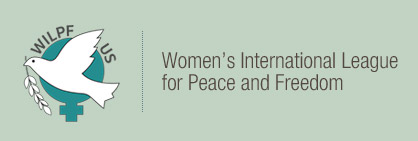“A Feminist Approach to What?"
Published on March, 30 2014By: Alicia Tambe
For the first few days at this Practicum, everyone has probably heard that I was writing a paper (aka rushing to finish a paper) on the causes and consequences of child marriage, as well as an analysis on how international and domestic laws have failed young girls in Niger. One of the hardest parts of my paper was attempting to figure out what holistic approach could be taken to create sustainable solutions.
Hence, I was excited when I saw various panel events that included sexual and reproductive health as well as child marriage. I decided to attend a program that took a feminist approach to child marriage. My first thought was “what the heck is a feminist approach to child marriage?” Before I even got to the program, I was frustrated on why any approach would be taken besides a human rights or rights based approach. Furthermore, I was hesitant to attend an event that was co-sponsored by religious groups. Practices such as FGM and child marriage, which are deeply rooted in religious and traditional customs, are often hard to discuss from the viewpoint of different religions. The truth is, I went into the meeting with a preconceived notion of what was going to happen. I thought the “western feminists” were going to talk about how wrong tradition and culture is and denounce anything that they did not agree with. Luckily, I underestimated the amazing panel, the active audience, and creative holistic approaches.
This was the first time I was introduced to a “feminist approach” to ending child marriage. As described by a panelist, the feminist approach puts young girls at the center. You can’t only focus on giving parents financial incentives to keep girls in school such as conditional cash transfers (money in exchange for a girl’s school attendance and possible health check ups) but you must also include a girl’s entire life cycle. By that, you need to bring older women, young women, mothers, grandmothers, aunts, and cousins to talk about the conditions of their lives and what is at stake in child marriage. Young girls need to be mentored so they can know that they have an option to not get married. By involving their mothers and grandmothers, girls can begin to be empowered by their loved ones at such a young age. Furthermore, it is important to educate men, especially young boys who can set a new precedent for future generations.
In terms of post 2015 MDG agenda, I found it very interesting that it was the religious groups on the panel that had the best ideas on new indicators that can help determine the rate of child marriage and the progress that is being made. For example, secondary education transition rates should be completed by sex. There should also be transition rates to see what is the retention of young girls. Lastly, one that I completely did not think of was the sanitary conditions in schools. It is not enough to have a school, but a young girl needs private, clean bathrooms especially when she is on her menstrual cycle.
The most important approach to using indicators that really made me turn my view point around was the suggestion to use local cultural religious and traditional groups based in the community and inquire what are the best practices for determining how to track progress. By using such a participatory approach and including all parties that are involved, will produce better results.
Bottom line: Don’t judge a book by its cover. Even if it turns out to be a bad book, you can always learn what was wrong with it and write your own bestseller : ) !
Learn. Analyze. Carry on!




Add new comment